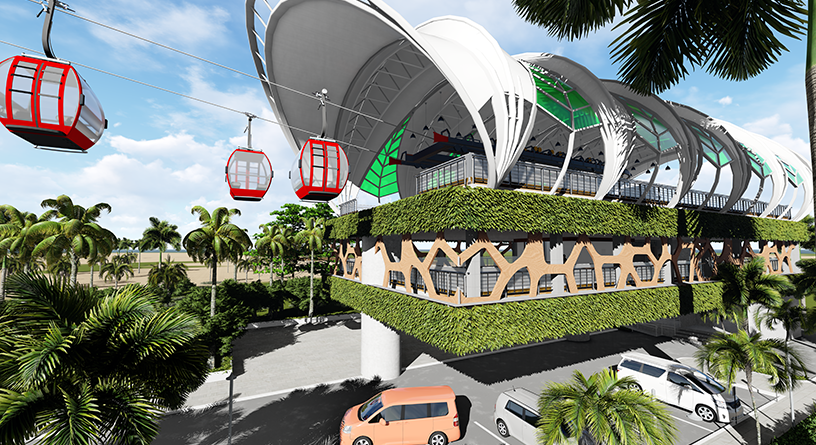Cable cars – a neglected mode of transport in urban environments?
By: Marianne Hatague and Angelei Plaza
Aerial cable cars are often the misunderstood mode of transportation. People usually associate it right away with tourism and recreation as it is commonly seen in ski resorts and amusement parks. Cable cars, however, are not limited to serve only this purpose. Large cities (e.g. New York, Medellin, Caracas, La Paz, Rio de Janeiro) have already adopted cable cars for the urban setting.
The cable car is a transportation technology that moves people in motorless, engineless vehicles or cabins that are pulled by steel cables that are suspended from above. This technology boasts its minimal impact on the environment, with zero to minimal harmful exhaust emissions. Its efficient structural components make way for a compact infrastructure footprint, resulting in reduced right-of-way acquisition.
With the increasing land development and road traffic congestion problems, there is the option to go elevated, knowing that going underground can be expensive. Although cable car system capacities are lower compared to subways, railways, and other high-capacity transport modes, certain situations call for other technologies to fulfill transport requirements. Common alignment problems encountered by other technologies include steep inclinations or mountainous urban setup and topographical challenges like rivers, straits and other bodies of water. Those problems typically correspond with higher costs.
In the Philippine setting, transport planners are considering the efficiency of cable cars and integrating this technology with Metro Manila’s current network. Transporting people from neighboring provinces may help boost their socio-economic status, in addition to the cable car being an effective feeder to an existing public transport system.
With its unique features, a cable car system can be considered as a competitive mode of transportation in urban environments.





